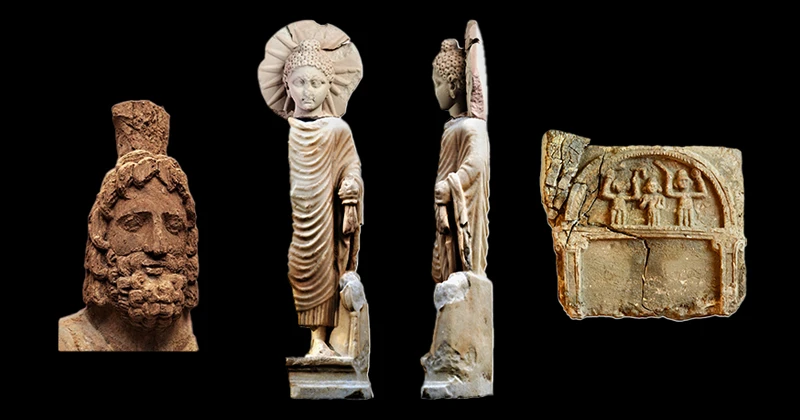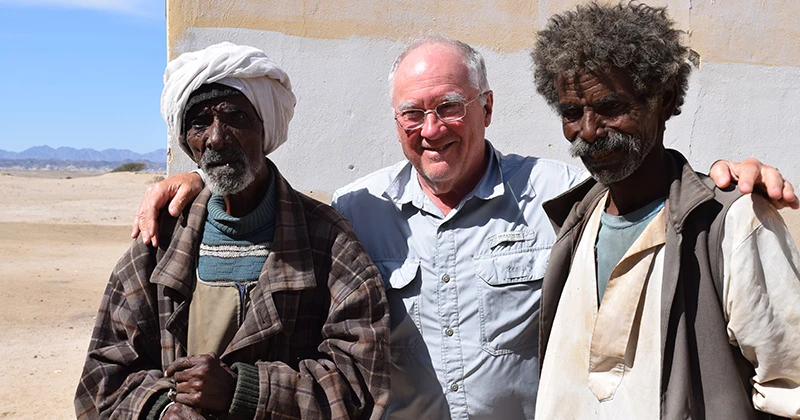RESEARCH
DISCOVERY
A Blog Devoted to UD Innovation, Excellence & Scholarship
ARCHEOLOGY
Hidden History, Hidden Treasure
Among the artifacts found at the Isis Temple in Berenike are a teak head of Serapis dating to about 100 A.D., the Berenike Buddha from 90-140 A.D. and a relief depicting three Hindu gods that dates between the first and third century A.D.
“It’s easy to take a dog out of Egypt,” Sidebotham said. “He just had to be in quarantine for two weeks and they gave him a little doggy passport. He’s here now lying on the couch.”
In addition to his canine friend, Sidebotham has brought back knowledge, photographs and experiences from his field work that have helped students understand the ancient world and expanded our knowledge of Roman influence throughout the Mediterranean during the Age of Antiquity, roughly between the eighth century B.C. and fifth century A.D.
Sidebotham poses with dig worker Mohammed Eid and his father at Berenike in 2024.
“We had tons of evidence of trade long before,” Sidebotham said. “We’ve had pottery and graffiti and coins, textiles, beads and semi-precious stones.”
The Berenike Buddha illustrates how one high profile find can encapsulate the decades of painstaking, mostly unseen work of archeology, and how our knowledge of the ancient world is incremental. The Berenike Buddha, while a great find, isn’t proof of previously unknown contact between ancient people that some media reported it to be; rather, it is one piece of the history that the team has been putting together for 30 years.
“It’s an important piece. It’s eye-catching,” Sidebotham said. “But it’s not telling us something we didn’t already know about trade or people living at Berenike.”






